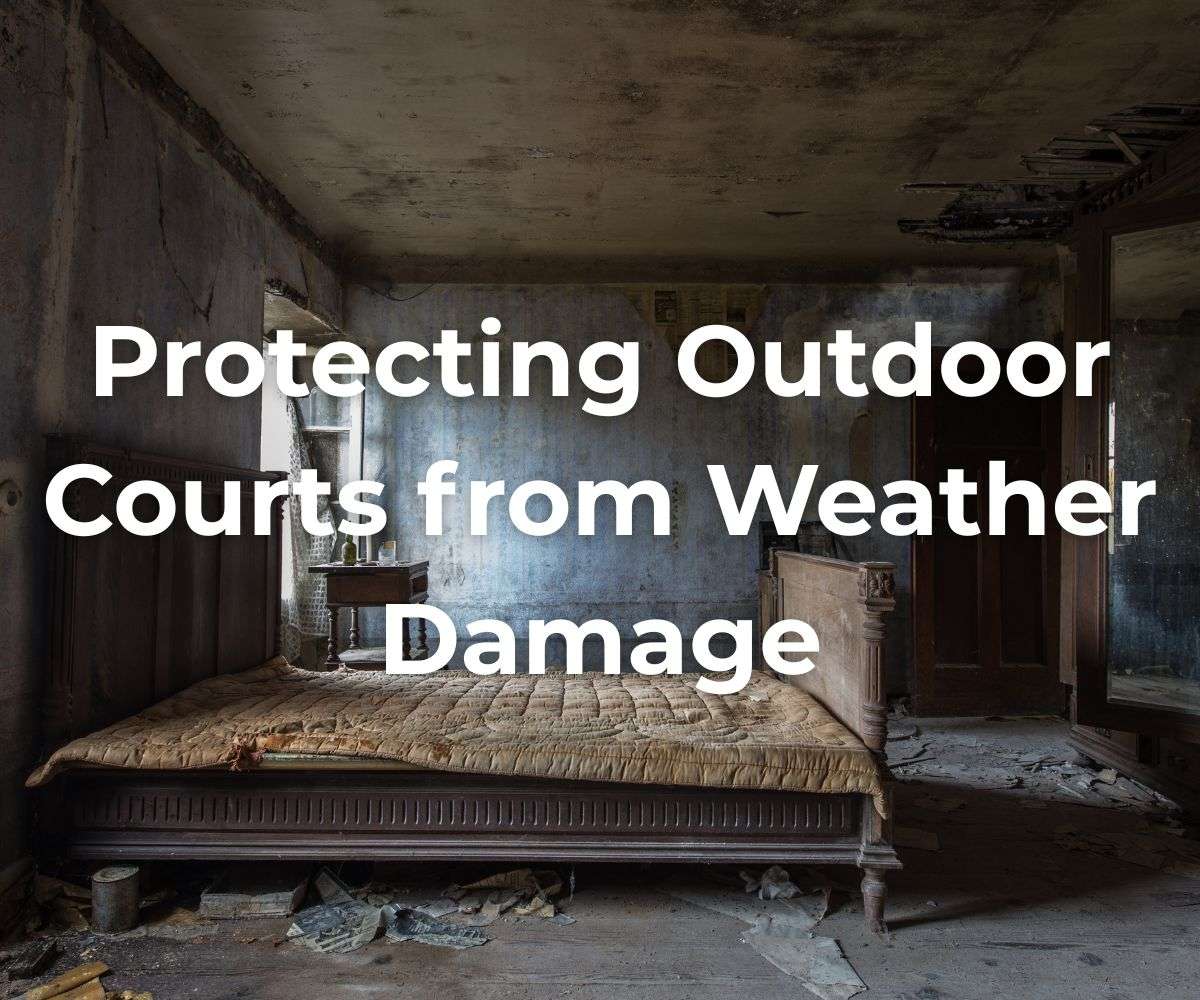protecting outdoor courts from weather damage
Description
Protecting Outdoor Courts from Weather Damage
Outdoor courts are a major investment, providing spaces for athletes and communities to play and connect. But with increasingly unpredictable weather, their durability is often tested. From extreme heat to heavy rain and winter's freeze-thaw cycles, weather can cause serious damage.
This guide covers how weather affects outdoor courts, shares preventative measures, and offers maintenance tips to keep them safe and functional for years. Plus, we'll highlight examples of successful weather-resistant courts.
Understanding the Risks
Outdoor courts face several weather-related threats that can compromise their usability and lifespan. Knowing these risks is the first step toward prevention.
1. Sun and UV Damage
Prolonged exposure to sunlight and UV rays can degrade court surfaces, causing colors to fade and materials to weaken. Over time, this leads to cracks, peeling, and an uneven playing surface, increasing the risk of injuries for players.
2. Rain and Water Damage
Heavy rain doesn't just wash away dust and debris; it can seep into surface cracks and slowly weaken the underlying foundation of the court. Poor drainage or standing water can exacerbate the issue, eventually leading to erosion or slippery surfaces that pose safety hazards.
3. Wind
Strong winds can transport debris, dirt, and even tiny rocks onto courts, potentially damaging the surface or leading to accidents, especially on textured court surfaces. Winds can also wear down fences and other protective structures surrounding the court.
4. Snow and Ice
Cold winters can wreak havoc on outdoor courts. The freeze-thaw cycle causes water trapped in cracks to expand and contract, leading to larger fissures. Ice left to accumulate on court surfaces adds extra weight and accelerates erosion once it melts.
Preventative Measures
Prevention is always better than repair. Strategic planning and materials selection can dramatically improve an outdoor court's resistance to weather damage.
1. Use Weather-Resistant Materials
Opt for durable surface materials designed for outdoor use, like acrylic coatings. These coatings offer superior defense against cracking, fading, and UV exposure, providing a longer-lasting, low-maintenance surface. For example, tennis courts made with acrylic layers are less prone to damage caused by both sunlight and rain.
2. Apply Protective Coatings
Sealants and specialized coatings can significantly enhance a court’s resistance to environmental factors. Anti-UV coatings protect surfaces from the sun while preventing color fading. Waterproof sealers prevent water from seeping into cracks, mitigating damage caused by freeze-thaw cycles or excessive rainfall.
3. Incorporate Smart Design Elements
Good design can help preemptively address environmental challenges. Sloping techniques ensure proper drainage so water doesn't pool on the surface. Additionally, installing windbreaks, such as barriers or fences, can reduce debris and wind exposure. For colder regions, heating systems beneath the court surface can prevent ice accumulation.
Maintenance Tips
Even with weather-resistant materials and designs, regular maintenance is essential to keep outdoor courts in top condition. Here’s how to ensure your court lasts as long as possible:
1. Conduct Regular Inspections
Inspect your court for signs of wear and damage after periods of extreme weather. Pay close attention to cracks, discoloration, or areas where water tends to accumulate. Identifying minor issues early can help you prevent major repairs later.
2. Keep the Surface Clean
Debris, like leaves, dirt, or rocks, can scratch the court and clog drainage systems. Regular sweeping and periodic power washing will help maintain a smooth and safe playing surface. Avoid using harsh chemicals or abrasive cleaning tools that might damage protective coatings.
3. Repair Damage Promptly
Over time, cracks, chips, and faded areas are inevitable, but they don’t have to spell disaster. Hire professionals for fast repairs when needed. For example, tennis court resurfacing, like those in Salt Lake City, is an excellent way to give your court a fresh finish and strengthen its defense against harsh weather conditions.
Conclusion
Investing in preventative measures and regular maintenance can protect outdoor courts from nature's wear and tear. Adding proper drainage, applying weather-resistant coatings, or routine surface inspections can make all the difference. Safeguarding these spaces not only saves on repairs but ensures players have a safe, reliable court for years. For tailored advice, consult a professional service based on your court type and climate.





















